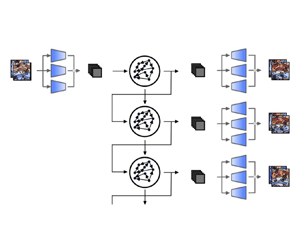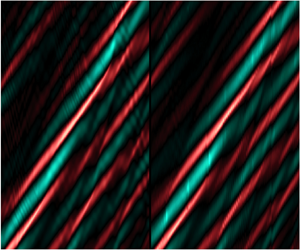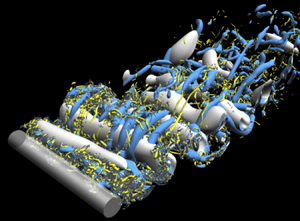doi:10.1017/jfm.2023.872 Ding & Xia Heat transport and flow morphology of geostrophic rotating Rayleigh-Bénard convection in the presence of boundary flow
JFM Rapids
On the settling of aligned spherical particles in various quiescent media
-
- Published online by Cambridge University Press:
- 13 November 2023, R1
-
- Article
-
- You have access
- Open access
- HTML
- Export citation
Wall mode dynamics and transition to chaos in magnetoconvection with a vertical magnetic field
-
- Published online by Cambridge University Press:
- 16 November 2023, R2
-
- Article
- Export citation
Minimum current for detachment of electrolytic bubbles
-
- Published online by Cambridge University Press:
- 16 November 2023, R3
-
- Article
-
- You have access
- Open access
- HTML
- Export citation
JFM Papers
Scattering of swell by currents
- Part of:
-
- Published online by Cambridge University Press:
- 09 November 2023, A1
-
- Article
-
- You have access
- Open access
- HTML
- Export citation
Predicting turbulent dynamics with the convolutional autoencoder echo state network
-
- Published online by Cambridge University Press:
- 15 November 2023, A2
-
- Article
-
- You have access
- Open access
- HTML
- Export citation
Tripping effects on model-scale studies of flow over the DARPA SUBOFF
-
- Published online by Cambridge University Press:
- 15 November 2023, A3
-
- Article
-
- You have access
- Open access
- HTML
- Export citation
Theory of acoustic streaming for arbitrary Reynolds number flow
-
- Published online by Cambridge University Press:
- 15 November 2023, A4
-
- Article
-
- You have access
- Open access
- HTML
- Export citation
Interacting density fronts in saturated brines cooled from above
-
- Published online by Cambridge University Press:
- 15 November 2023, A5
-
- Article
-
- You have access
- Open access
- HTML
- Export citation
Grounding-line flux conditions for marine ice-sheet systems under effective-pressure- dependent and hybrid friction laws
-
- Published online by Cambridge University Press:
- 10 November 2023, A6
-
- Article
- Export citation
Wake bi-modality: the effect of upstream boundary layer dynamics
-
- Published online by Cambridge University Press:
- 10 November 2023, A7
-
- Article
- Export citation
Nonlinear deterministic reconstruction and prediction of remotely measured ocean surface waves
-
- Published online by Cambridge University Press:
- 10 November 2023, A8
-
- Article
-
- You have access
- Open access
- HTML
- Export citation
Reynolds number dependence of turbulent kinetic energy and energy balance of 3-component turbulence intensity in a pipe flow
-
- Published online by Cambridge University Press:
- 10 November 2023, A9
-
- Article
- Export citation
Cross-stream oscillations in the granular flow through a vertical channel
-
- Published online by Cambridge University Press:
- 10 November 2023, A10
-
- Article
-
- You have access
- Open access
- HTML
- Export citation
Energy cascade in the Garrett–Munk spectrum of internal gravity waves
-
- Published online by Cambridge University Press:
- 10 November 2023, A11
-
- Article
-
- You have access
- Open access
- HTML
- Export citation
Observations of transient wave-induced mean drift profiles caused by virtual wave stresses in a two-layer system
-
- Published online by Cambridge University Press:
- 13 November 2023, A12
-
- Article
-
- You have access
- Open access
- HTML
- Export citation
Hierarchy of coherent vortices in turbulence behind a cylinder
-
- Published online by Cambridge University Press:
- 13 November 2023, A13
-
- Article
-
- You have access
- Open access
- HTML
- Export citation
Revisiting the role of friction coefficients in granular collapses: confrontation of 3-D non-smooth simulations with experiments
-
- Published online by Cambridge University Press:
- 15 November 2023, A14
-
- Article
-
- You have access
- Open access
- HTML
- Export citation
Numerical analyses of the flow past a short rotating cylinder
-
- Published online by Cambridge University Press:
- 13 November 2023, A15
-
- Article
-
- You have access
- Open access
- HTML
- Export citation
Self-excited vortex-acoustic lock-in in a bluff body combustor
-
- Published online by Cambridge University Press:
- 13 November 2023, A16
-
- Article
- Export citation
Energy flux and high-order statistics of hydrodynamic turbulence
-
- Published online by Cambridge University Press:
- 15 November 2023, A17
-
- Article
- Export citation











































































































